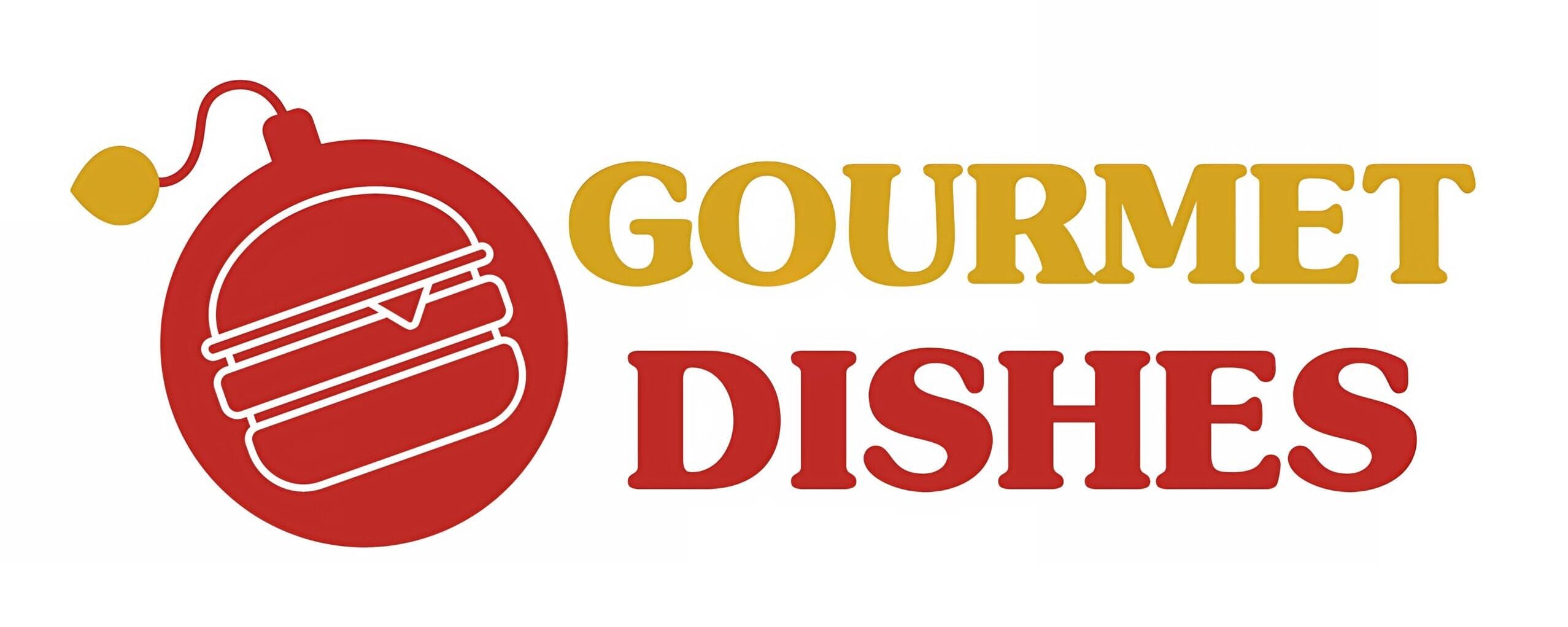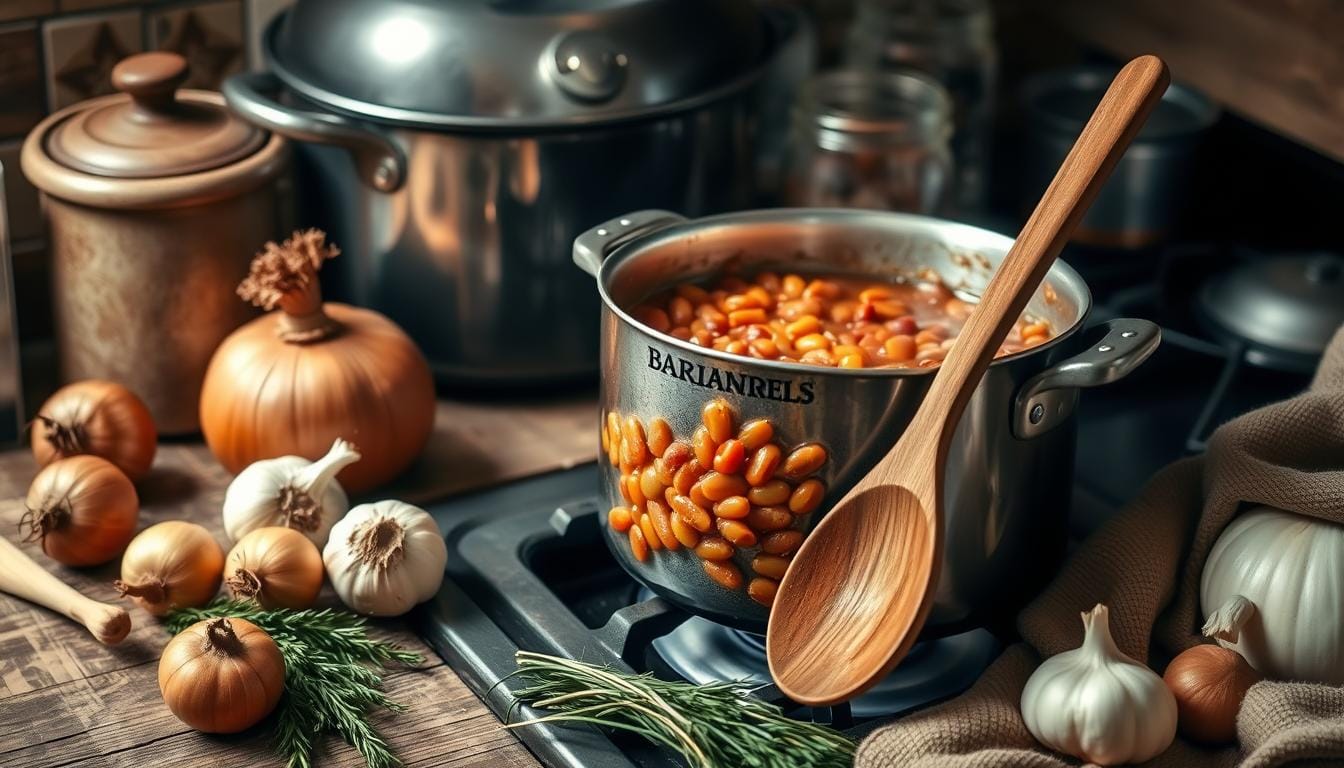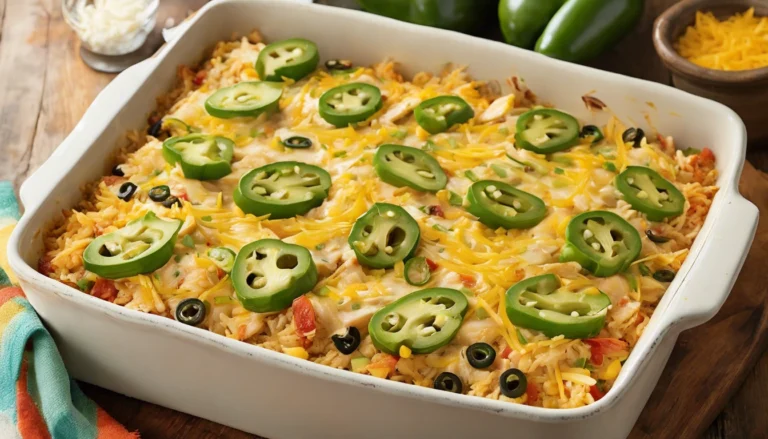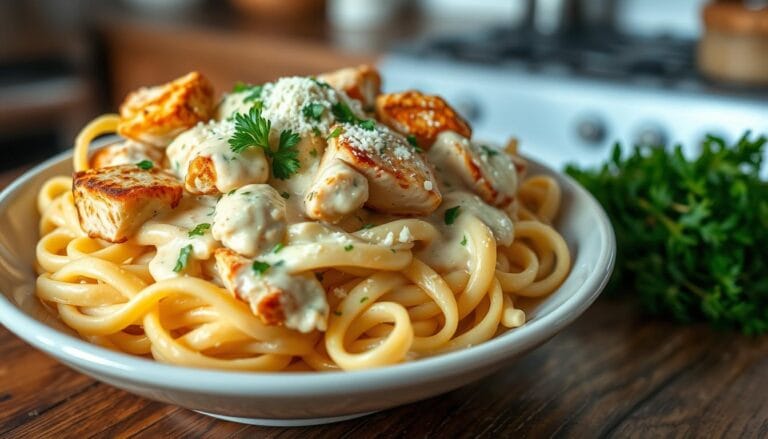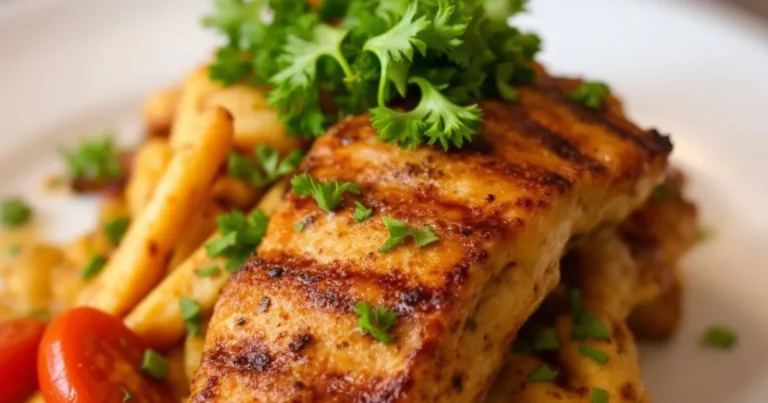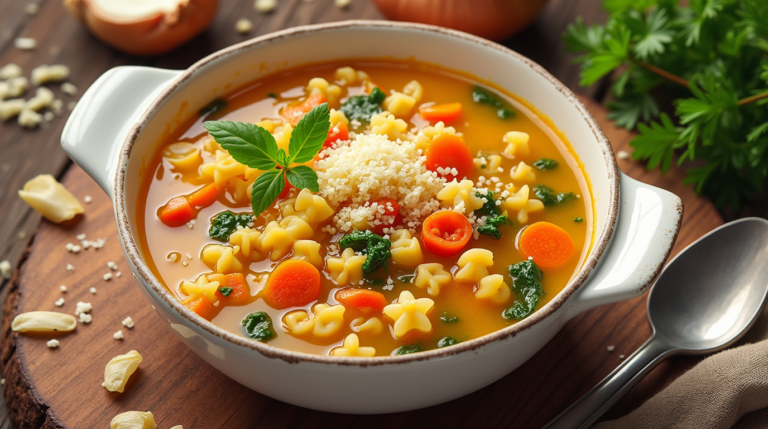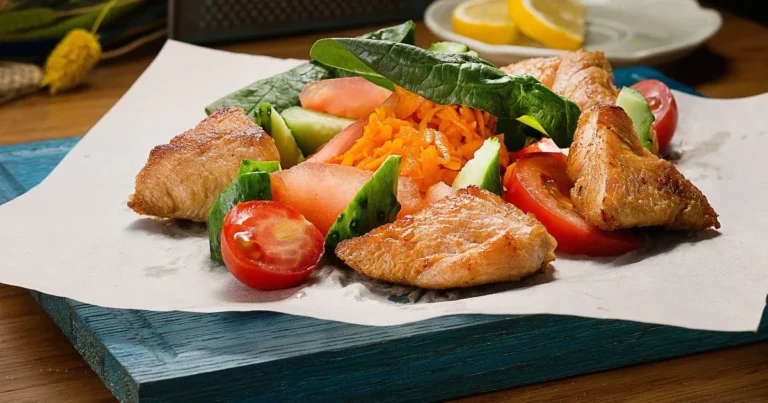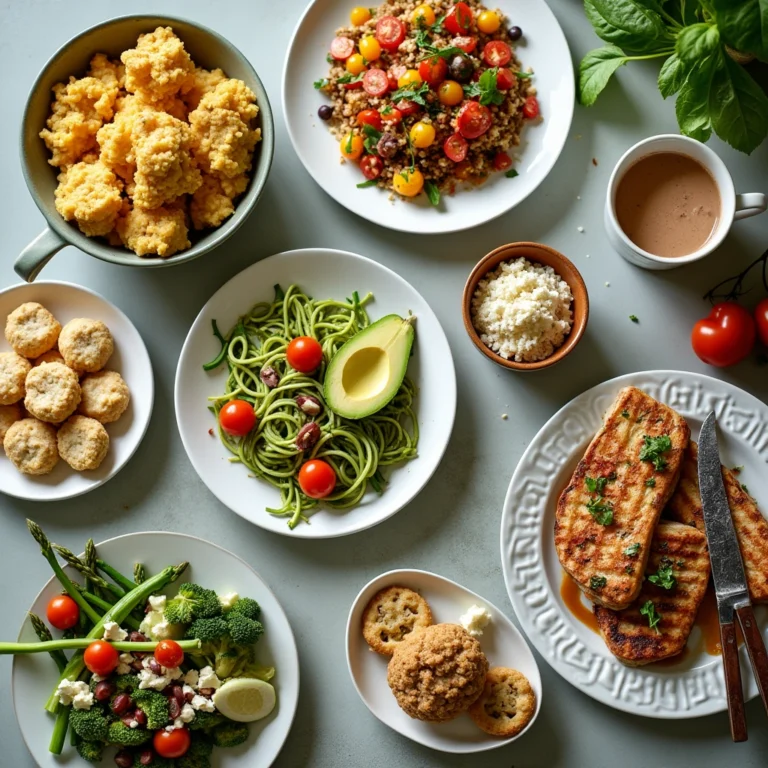Baked Beans Recipe: A Hearty, Flavorful Classic
Growing up in a small Midwestern kitchen, I learned that some of life’s most comforting meals are surprisingly simple. The humble baked beans recipe was a staple that brought our family together. It transformed ordinary dinners into memorable gatherings. Those rich, sweet, and savory beans bubbling in a cast-iron pot became more than just food – they were a connection to tradition and home.
Whether you’re a seasoned home cook or just starting your culinary journey, this homemade baked beans recipe promises to deliver pure comfort on a plate. From backyard barbecues to cozy winter meals, these baked beans are versatile enough to complement any spread. They offer a delicious taste of American cuisine.
The beauty of a classic baked beans recipe lies in its simplicity. With just a few ingredients and some patience, you can create a dish that’s both nourishing and incredibly satisfying. This guide will walk you through everything you need to know about preparing the perfect batch of baked beans.
Key Takeaways
- Discover the ultimate homemade baked beans recipe
- Learn traditional cooking techniques
- Understand the cultural significance of baked beans
- Explore versatile serving suggestions
- Master simple cooking methods for perfect results
The History and Origins of Boston Baked Beans
Boston baked beans have a long history in American cuisine. It all started with Native American communities, who first grew and cooked beans. They were a key food for these early people.
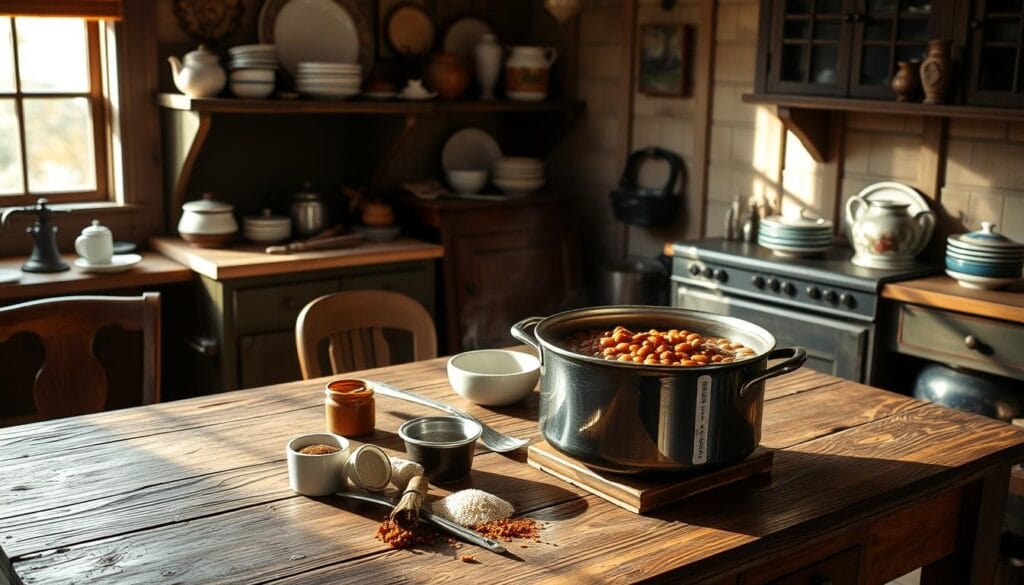
Native American Influence on Bean Preparation
Native tribes in North America were experts at growing beans. They taught early settlers how to cook them in special ways. Beans were a vital source of protein for these communities.
- Beans were a critical protein source
- Traditional preparation techniques involved slow cooking
- Ceramic pots were used for even heat distribution
Colonial New England Traditions
When Europeans came to Massachusetts, they adopted Native American cooking methods. The cold weather made slow-cooked meals a must. They mixed local ingredients with these methods to create boston baked beans.
“A pot of beans was more than food—it was a weekly tradition that brought families together.” – Local New England Historian
Evolution into Modern Comfort Food
Over time, baked beans became a favorite comfort food. The industrial age and canning made them popular across the country. Now, they’re a symbol of American cuisine.
| Era | Baked Bean Characteristics |
|---|---|
| Pre-Colonial | Native American Bean Cultivation |
| Colonial Period | Settler Adaptation and Molasses Introduction |
| Industrial Age | Commercialization and Nationwide Popularity |
Today, boston baked beans are a symbol of culinary innovation and cultural exchange. They still warm and flavor tables across America.
Essential Ingredients for Perfect Baked Beans
Making delicious homemade baked beans starts with picking the right ingredients. The key to a classic, rich flavor is in choosing the right ingredients.
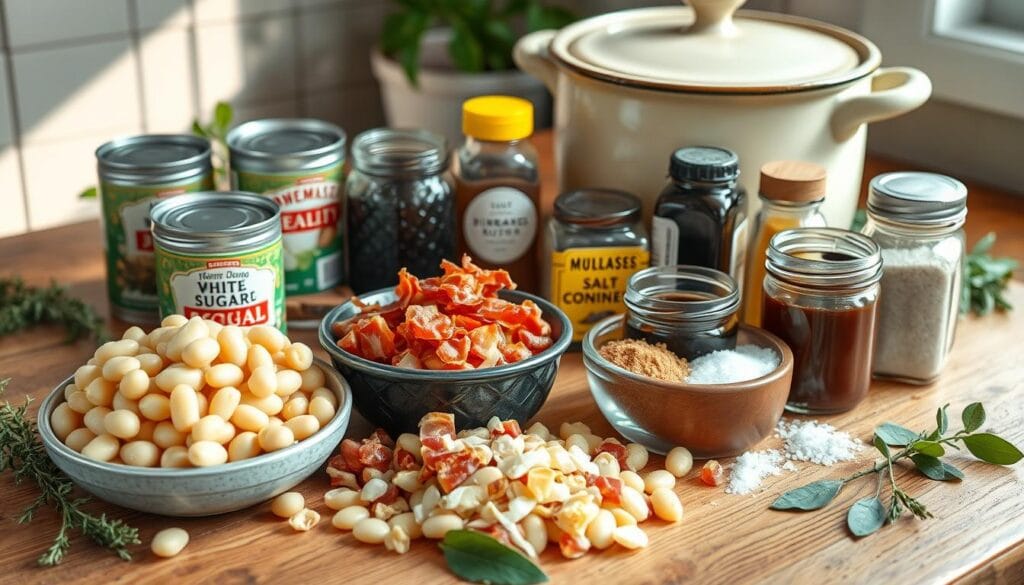
The ingredients you choose will affect the taste and texture of your dish. Let’s look at the main parts that make simple beans into a tasty meal:
- Dried Navy Beans: The traditional base for authentic baked beans
- Molasses: Provides deep, rich sweetness
- Bacon or Salt Pork: Adds smoky depth and savory flavor
- Onions: Brings subtle aromatic notes
- Brown Sugar: Enhances natural sweetness
“The secret to great homemade baked beans is in the quality of ingredients and patience during cooking.” – Traditional New England Cook
For the best homemade baked beans, follow these premium ingredient tips:
| Ingredient | Quality Tip | Flavor Impact |
|---|---|---|
| Molasses | Use dark, robust varieties | Deeper, more complex sweetness |
| Bacon | Choose thick-cut, smoky bacon | Richer, more pronounced meat flavor |
| Beans | Select fresh, dry Navy beans | Better texture and absorption |
Your baked bean ingredients should be fresh and of high quality. Authenticity comes from selecting the right components and treating them with care.
Traditional Baked Beans Recipe: Step-by-Step Guide
Making the perfect homemade baked beans takes patience and care. A traditional recipe adds comfort and flavor to your meals. It turns simple ingredients into a dish everyone will enjoy.
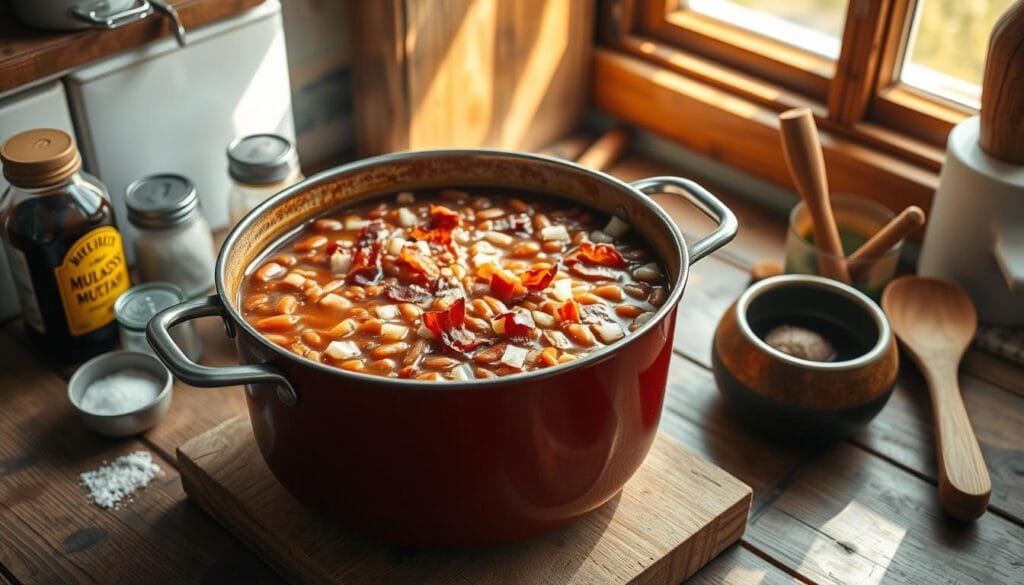
Bean Soaking Techniques
Getting your beans ready is key for great baked beans. Here are the best soaking methods:
- Overnight cold water soak: Cover beans with water and let sit for 8-12 hours
- Quick soak method: Boil beans for 2 minutes, then let rest for 1 hour
- Use fresh, high-quality navy beans for best results
Sauce Preparation Tips
The secret to tasty homemade baked beans is a rich sauce. Follow these expert tips:
- Use molasses for authentic sweetness
- Combine brown sugar and mustard for depth
- Add bacon or salt pork for traditional flavor
| Ingredient | Quantity | Purpose |
|---|---|---|
| Navy Beans | 2 cups | Primary base |
| Molasses | 1/4 cup | Sweetness and color |
| Bacon | 4 slices | Smoky flavor |
Cooking Time and Temperature Guidelines
Mastering the cooking process is crucial for tender beans and a rich sauce. Slow cooking brings out deep flavors in your baked beans.
“Great baked beans are a labor of love, requiring patience and precision.” – Traditional Cooking Wisdom
Bake your beans at 325°F (163°C) for about 3-4 hours. Check them often and add liquid as needed. Your homemade baked beans will be perfectly soft and full of flavor.
Choosing the Right Beans: Navy vs Great Northern
When making homemade baked beans, picking the right bean is key. Navy beans and Great Northern beans are top picks for many home cooks. They each offer unique textures and flavors.
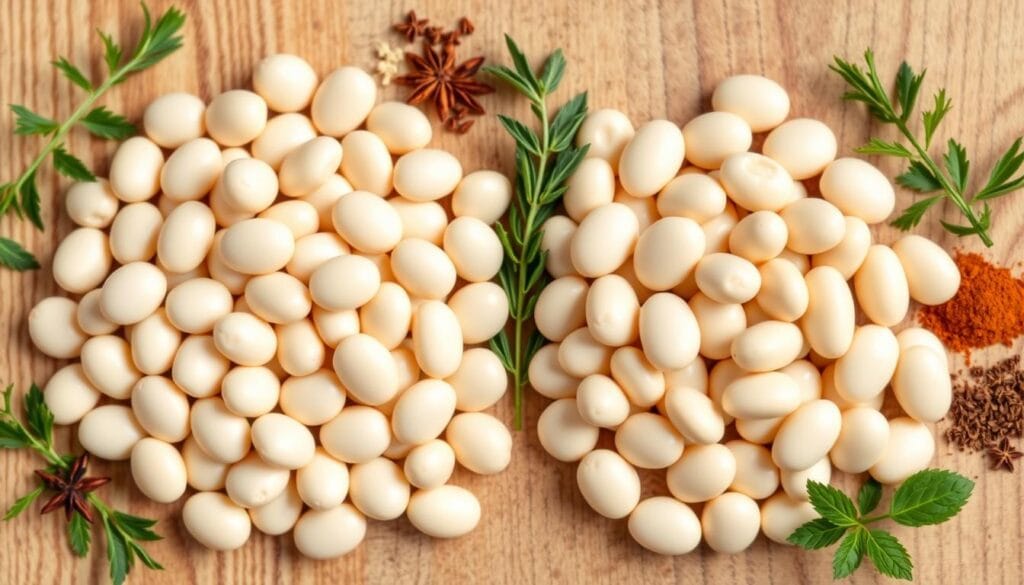
Navy beans are small and oval, making them a classic choice. They soak up flavors well and stay firm during long cooking times. This makes them perfect for slow-cooked recipes.
- Navy Beans Characteristics:
- Small, white appearance
- Creamy, soft texture
- Quick absorption of seasonings
- Great Northern Beans Characteristics:
- Larger, flatter shape
- Mild, delicate flavor
- Firmer texture when cooked
Great Northern beans are bigger and taste milder. They let the sauce and other ingredients take center stage in your baked beans.
| Bean Type | Size | Texture | Flavor Absorption |
|---|---|---|---|
| Navy Beans | Small | Creamy | High |
| Great Northern Beans | Medium | Firm | Moderate |
“The bean you choose can transform your entire baked bean experience.” – Culinary Chef
Your choice depends on what you like and your recipe. Try both types to see which one you prefer in your baked beans.
Vegetarian Baked Beans: Plant-Based Alternatives
Exploring vegetarian baked beans opens up a world of delicious and nutritious possibilities for plant-based eaters. Whether you’re a committed vegetarian or simply looking to reduce meat consumption, these bean recipes offer a hearty and satisfying meal packed with essential nutrients.
Creating flavorful vegetarian baked beans requires creativity and understanding of plant-based protein sources. Your bean dish can be both nutritionally complete and incredibly tasty.
Meat-Free Protein Options
- Tempeh – fermented soybean protein with robust flavor
- Seitan – wheat-based protein with meat-like texture
- Smoked tofu – adds depth to baked bean nutrition
- Textured vegetable protein (TVP) – lightweight protein alternative
Flavor Enhancement Techniques
Vegetarian baked beans shine when you layer complex flavors. Smoked paprika, liquid smoke, and nutritional yeast can mimic traditional meat-based recipes while keeping the dish completely plant-based.
Nutritional Considerations
| Protein Source | Protein (g) | Calories |
|---|---|---|
| Navy Beans | 15 | 255 |
| Tempeh | 20 | 320 |
| Tofu | 10 | 180 |
“Vegetarian baked beans are not just a side dish – they’re a nutritional powerhouse!” – Nutrition Expert
Experiment with different protein sources to find your perfect vegetarian baked beans recipe. The key is balancing nutrition, flavor, and texture to create a meal that satisfies and nourishes.
Quick and Easy Baked Beans Using Canned Options
Turning canned baked beans into a tasty meal is easy. Just a few simple steps can make them a hit at any gathering. You’ll impress everyone with your quick and delicious side dish.
Canned baked beans are a great time-saver. They still pack a lot of flavor. The trick is to add a few extra touches to make them taste like they were made from scratch.
- Choose high-quality canned baked beans as your base
- Add depth with additional ingredients like bacon or maple syrup
- Experiment with spices to customize the flavor profile
Quick ways to improve your canned baked beans include:
- Smoky bacon bits for extra richness
- Diced onions and garlic for complexity
- A splash of bourbon or brown sugar for sweetness
“Great cooking is about making something delicious with simple ingredients” – Julia Child
For a homemade taste, transfer the beans to a cast-iron skillet or baking dish. Then add your extra ingredients. This method gives a slow-cooked texture and blends flavors well.
With these easy tips, you’ll make canned baked beans into a dish everyone will love. It will taste like it simmered all day.
Slow Cooker Baked Beans for Maximum Flavor
Turning classic baked beans into a tasty meal is easy with a slow cooker. It’s a great way to get rich flavors without spending hours in the kitchen.
Using a slow cooker for baked beans brings out deep, complex flavors. The slow heat lets all the ingredients blend together perfectly.
Preparation Methods for Perfect Slow Cooker Beans
- Soak dried beans overnight for optimal texture
- Layer ingredients strategically for maximum flavor
- Use low-sodium broth for better control of saltiness
- Select high-quality bacon or salt pork for depth
Time-Saving Tips
Slow cooker baked beans make cooking easy. Start your recipe in the morning and come home to a ready-to-eat dinner.
| Cooking Setting | Time Required | Flavor Intensity |
|---|---|---|
| Low Heat | 6-8 hours | Rich, Deep Flavor |
| High Heat | 3-4 hours | Moderate Flavor |
Storage Solutions
Keep your baked beans in airtight containers. They stay fresh in the fridge for 4-5 days. Freeze them in portions for up to three months.
“The slow cooker transforms simple ingredients into a culinary masterpiece.” – Home Cooking Expert
Pro tip: Always let beans cool completely before refrigerating to preserve texture and prevent moisture buildup.
Creative Ways to Serve Your Homemade Baked Beans
Homemade baked beans are more than just a side dish. They can turn your meals into something special. They work well for breakfast, lunch, or dinner, adding a unique twist to your cooking.
- Breakfast Reimagined: Top crispy toast with warm baked beans and a poached egg
- Hearty Nachos: Use baked beans as a protein-rich nacho topping
- Savory Stuffed Peppers: Fill bell peppers with beans and cheese
- Rustic Shepherd’s Pie: Layer baked beans under mashed potato crust
Looking for something international? Baked beans can be a hit in many cuisines. Try these global ideas:
| Cuisine | Bean Dish Adaptation |
|---|---|
| Mexican | Baked Bean Quesadillas |
| British | Bean-Topped English Muffins |
| Indian | Spiced Bean Curry |
“Creativity in cooking is about transforming simple ingredients into extraordinary meals.” – Chef’s Wisdom
Don’t forget about presentation. Serve your baked beans in colorful dishes. Add fresh herbs or pair them with sides like crusty bread or green salads. This makes your meals both tasty and beautiful.
Nutritional Benefits and Dietary Information
Baked beans are packed with nutrients that can improve your health. They are great for both traditional and vegetarian diets. These legumes are full of nutrients that help keep you well.
Protein and Fiber Content
Baked beans are high in protein and fiber. A single serving gives you a lot of nutritional value:
- Approximately 12-15 grams of protein per cup
- Around 10-12 grams of dietary fiber
- Supports muscle development and digestive health
Caloric Value and Portions
Knowing how much to eat helps you get the most from baked beans:
| Serving Size | Calories | Protein | Fiber |
|---|---|---|---|
| 1/2 cup | 120-150 | 6-7g | 5-6g |
| 1 cup | 240-300 | 12-15g | 10-12g |
Dietary Restrictions
Vegetarian baked beans are a great protein source for those who don’t eat meat. They are:
- Gluten-free
- Low in fat
- Suitable for vegan diets (when prepared without meat)
- Rich in complex carbohydrates
“Beans are an incredibly versatile and nutrient-dense food that can benefit almost any diet.” – Registered Dietitian
Pro tip: Always check labels for sodium content and choose low-sodium options when possible to maximize health benefits.
Troubleshooting Common Baked Bean Issues
Making the perfect homemade baked beans can be tricky. Even seasoned cooks face problems that affect their beans’ taste and texture. Knowing how to fix these issues can help you make delicious baked beans every time.
When you’re cooking your baked beans, you might run into common problems. Here are some expert tips to help you overcome these challenges:
- Dry Beans: If your beans are too dry, they need more liquid. Try adding a little water or broth to make them moist again
- Tough Beans: Hard beans mean they’re not cooked enough. Make sure you’re cooking them at the right temperature and for long enough
- Bland Flavor: To make your baked beans taste better, try adding more seasonings like smoked paprika or maple syrup
Getting the right texture is important for baked beans. They should be creamy but still firm, not mushy or too watery.
“The secret to perfect baked beans is patience and attention to detail.” – Culinary Expert
Bean Cooking Troubleshooting Guide
| Problem | Possible Cause | Solution |
|---|---|---|
| Beans Too Hard | Insufficient Soaking | Soak beans overnight, use fresh water |
| Bitter Taste | Old Beans or Hard Water | Use fresh beans, filtered water |
| Sauce Too Thin | Too Much Liquid | Simmer uncovered to reduce sauce |
With these troubleshooting tips, you’ll be able to make perfect homemade baked beans. They’ll be flavorful and satisfying every time.
Storage Tips and Reheating Guidelines
Keeping your homemade baked beans fresh is key. You need to store and reheat them right. This way, they stay tasty and soft.
Freezing Methods for Long-Term Preservation
Freezing is a great way to keep baked beans fresh longer. Here’s how to do it right:
- Cool baked beans completely before freezing
- Use airtight containers or heavy-duty freezer bags
- Leave about 1/2 inch of space at the top for expansion
- Label containers with the date of preparation
Selecting the Right Storage Containers
Choosing the right containers is important. Glass containers with tight lids are best for the fridge. Plastic freezer bags are better for the freezer.
“The key to great leftover baked beans is proper storage and gentle reheating.” – Culinary Experts
Reheating Techniques for Perfect Texture
Here’s how to warm up your baked beans:
- Microwave: Heat in short intervals, stirring between each
- Stovetop: Warm slowly over medium-low heat
- Oven: Reheat at 350°F in a covered dish
Pro tip: Add a splash of water or broth to prevent drying out when reheating your baked beans.
Stored right, your baked beans can last 3-4 days in the fridge and 3 months in the freezer. Always check for spoilage before eating.
Table of Contents
Conclusion
Learning to make the perfect baked beans is more than cooking. It’s about starting a family tradition in your kitchen. Your homemade baked beans can turn into a special meal that links you to America’s cooking past.
Whether you stick with traditional navy beans or try vegetarian options, the possibilities are endless. You can adjust your recipe to fit different tastes and needs. This makes baked beans a versatile comfort food for any event.
Now you know the secrets behind making delicious, healthy baked beans. You can impress your loved ones with each new batch. It’s a chance to get better at cooking and explore the rich history of this beloved American dish.
Are you ready to begin your baked beans journey? Get your ingredients and pick your cooking method. Your perfect homemade baked beans are just a few steps away!
